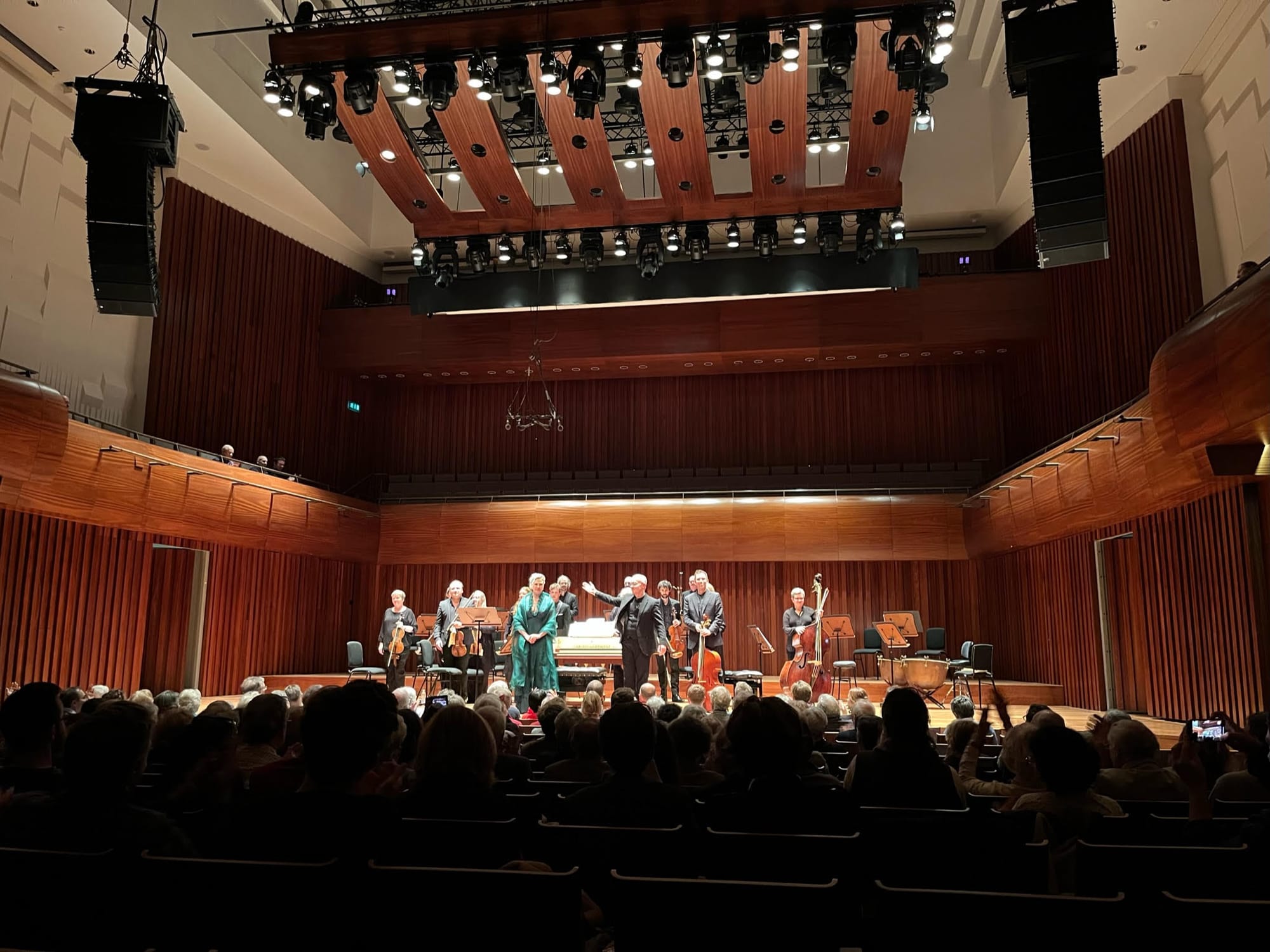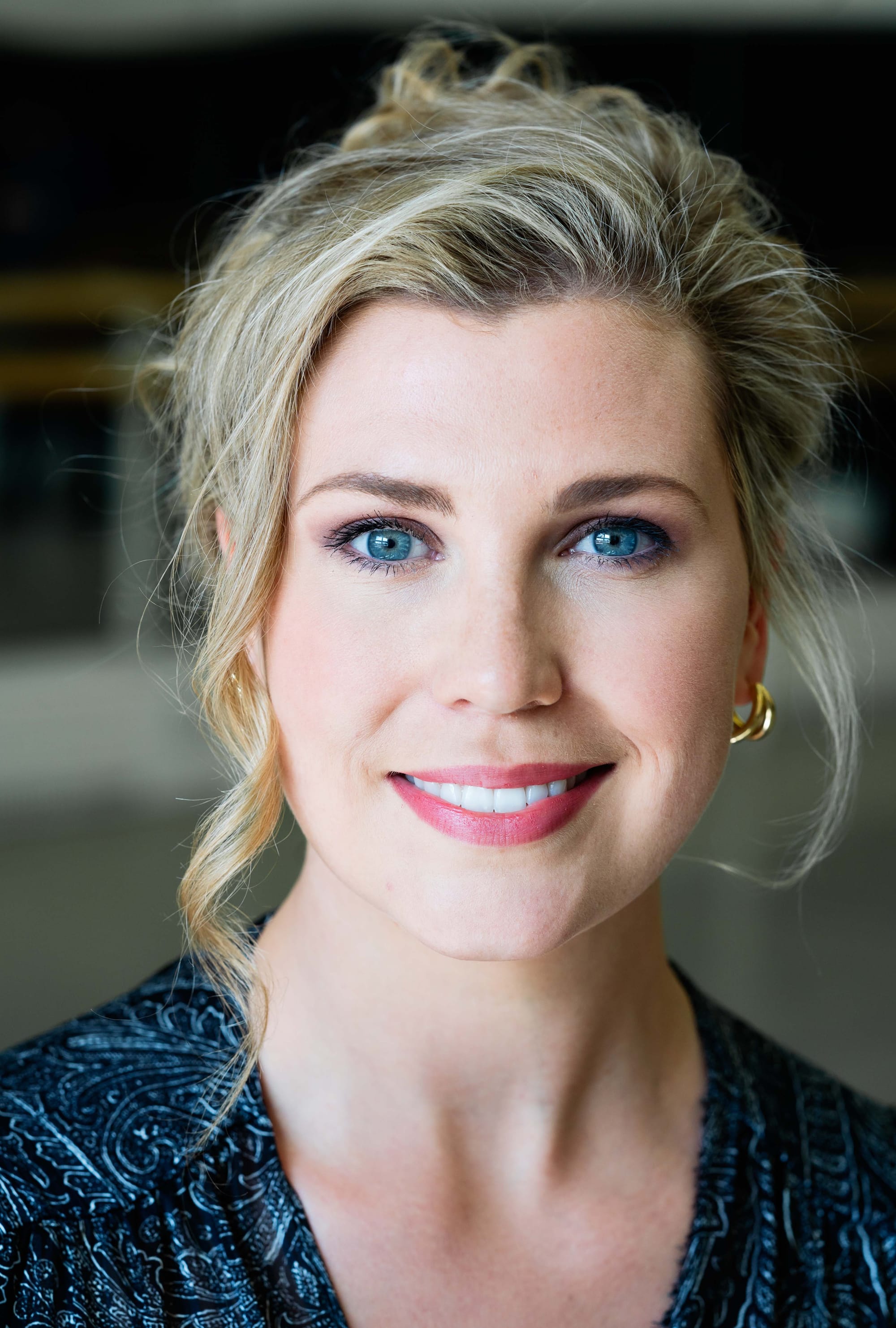The AAM: Music for an Empress

Command Performance: Music for an Empress Alexandrea Lowe (soprano); Academy of Ancient Music / Laurence Cummings (director/harpsichord). 23.11.2023
Maria Teresa Agnesi (1720-95) La Sofonisba (1748) - ‘Licenza’ (È questo il fausto giorno ... La tua sol fra l’alme belle)
Haydn Symphony No. 48 in C major, ‘Maria Theresa’ (1769)
Marianna Martines (1744-1812) Berenice, ah che fai? (1767)
Johann Adolf Hasse (1720-95) Ruggeiro (1771) - Sinfonia
Martines Keyboard Concerto in D (1766)
Gluck Alceste (1767) – Non vi turbate
Mozart Symphony in D, K 45 (1768)
Agnesi La Sofonisba (1748) - 'Rapido turbin vede’
The Academy of Ancient Music’s programming has always been exemplary. Here, it was an evening devoted to Maria Theresa of the House of Hapsburg, born Vienna in 1717, the eldest daughter of Charles VI, Emperor of the Holy roman Empire and the last surviving male Hapsburg. Agnesi died in 1795.
Maria Theresa was taught music by one of the composers on the programme: Johann Adolf Hasse. But she is not the Maria Teresa (no ‘h’) in the programme: that’s Maria Theresa Agnesi, born in Utrecht. It is possible the two Maria T(h)eresas met in Milan, in 1739; they definitely knew each other later, as Agnesi sent a copy of the score of her opera La Sofonisba to Maria Theresa for their shared name day. The earliest surviving opera seria by a woman, La Sofonisba is a tale of decline followed by suicide – that of the titular character, a Namidian queen. Interestingly, La Sofonisba is dedicated to Francis of Lorraine, consort of the Empress Maria Teresa.
The first recitative and aria on the programme is actually a dedicatory aria for the Empress performed after the end of the opera proper, ‘Licenza’. In a bold dramatic stroke, the AAM’s cello and harpsichord did not even wait for the applause to finish before launching into the recitative. Spanish-born British soprano Alexandra Lowe remains one of the finest of the young generation of singers (a recent graduate of the Royal Opera’s Jette Parker scheme) - her debut album on Champs Hill, Le Voyage, was a stunner. Her voice has a warmth one might more readily associate with a mezzo. She is clearly an intelligent singer - the way she thought in paragraphs in the extended opening recitative was most impressive (as as her diction). The meeting of the AAM’s crack ensemble playing (just so together) and Lowe’s ultra-clean slurs in the aria proper (‘La tua sol fra l’alme belle’; Yours alone, of the beautiful souls … accorded to the lofty blood of Austria) was pure joy. When she extends up high, it is glorious because there is no loss of tone – a true blossoming of phrases. Bojan Čečíć’s decorative violin contributions were perfectly calibrated; on a compositional level, they are like a garland to the slower-moving vocal line. The piece is magnificent; so was the performance.

Haydn’s Symphony No. 48 was thought to be composed for the Empress’ visit to the Esterházy court. It contains two real screamers of horn parts (so horns in C-alto, then), an both Gavin Edwards ad Richard Baylis excelled. The level of accuracy was stratospherically high (in not 100% - they are human, after all), and Haydn’s demands are crippling on the lips. The opening Allegro buzzed with energy from all quarters – even more so on the repeat of the exposition. The Adagio slow movement was perfect contrast (the horns working together as one superb unit here, Haydn’s writing referencing their hunting origins in the intervals used, but turning the whole into supreme grace, Interesting how Haydn takes the listeners to some surprisingily dark places not in the slow movement, but in the Menuetto. The bustling, animated finale was more determined than anything resembling buffa; it contains some remarkable changes of mood, all expertly negotiated by the AAM players. Cummings directed superbly from a double-manual harpsichord.
But the fire of Haydn was little in comparison to the opening recitative of Berenice ah che fai? by Marianna Martines, born in Verona in 1744 (whose family’s landlord in Vienna was none other than prolific librettist Pietro Metastasio). Martines studied with Haydn and Porpora (two other of Metastasio’s tenants!) and Hasse. The 1767 Berenice, ah che fai? Is from a set of 24 arias. This is a full-on operatic scena. This is an intense piece, fiery instrumental writing matched by Lowe’s response. Lowe has all of the registers required here (her low register is remarkably full, and there is no break at the top). The whole steamrolls its way to the final ‘Perchè, se tanti siete / che delirar mi fate’ (If there are so many of you, why make me rave), heard here in a performance of virtuosity and vital energy. A nice touch to have the two flutes stand for their pastoral solo earlier. Lowe’s cadenza-like flourish prior to the final word (‘dolor,’ unsurprisingly) showed her completely inside the protagonist’s mind. Quite a way to end the first half …
Lovely to hear the Sinfonia from Hasse’s Ruggiero (1771) at the start of the second part. A positively Handelian sense of grandeur suffused the opening Maestoso (think the Music for the Royal Fireworks scale) This is fascinating writing. Ruggiero was written at the request of the Empress (to a libretto by Matastasio); interestingly, the premiere of Ruggiero fell just one day before that of Mozart’s Ascanio in Alba (which latter pleased the public more – interesting also to note that Ascanio will be performed in Frankfurt in December this year). Hasse’s opera, if the Sinfonia is anything to go by, is a brilliantly inventive piece The finale of the Sinfonia is Persil-bright, replete with vigorous counterpoint. What a great piece – and what a vigorous performance.
Back to Martines, but for a keyboard concerto discovered only recently but written when the composer was a mere 22 years old. The chosen harpsichord sounded somewhat quiet as a solo instrument with the AAM players reducing to the merest hush on occasion, but what a lovely, glittering work this is, and Cummings obviously enjoyed every minute. The solo part is certainly active, and Cummings (like that of his AAM ‘colleague’ Robert Levin) is not averse to some well-placed rubato in the music of this period (quite a skill to bring off, and he did). The cadenza was well-judged, clever, and even cute. A gentile – and gentile - Andante alerts us to a composer of stature (performance-wise the use of violins in perfect unison was most impressive). The triple-time finale is certainly dance-like – but the solo instrument seems to be relegated to more of a continuo presence most of the time here. Nevertheless, a real discovery.
Mozart’s Symphony No. 7 in D, K 45 only lasts about 12 minutes in toto. It was written for an Imperial audience with Maria Theresa. With characteristic approach to deadlines, Mozart finished his Symphony three days before the audience. However, there was no orchestra present; Emperor Joseph II suggested Mozart compose and opera for the court – and the result was the symphony was re-used as the Overture to La finta semplice. The piece is notable mainly for its slow movement, an Andante in which a melody flies over several octaves, from low to high – all the while, middle strings play triplets. It comes as a great contrast to the Haydnesque Sturm und Drang of the first movement. The AAM made the most of the contrast between grand Menuetto and string-only Trio in the third movement. The fiery finale (blessed with repeats) was punchy, alive and perfect. A clear reminder of the importance of Mozart’s earlier symphonies – and of their musical interest.
Finally, back to Agnesi’s La Sofonisba. The aria that closed was actually that which closes act I: ‘Rapido turbin vede’ (Pale and filled with horror). Lowe’s rich voice imbued the music with a full palette of colour. And what deep music this is – delicious dissonances were relished by the AAM players. The aria itself is of great profundity; so was the performance. Lowe is a compelling performance of great musical intelligence.
A revelatory evening, educational in one sense but in another, richly satisfying.
As a post-scriptum regarding Agnesi, the discographically curious might want to investigate a couple of discs on the fine Italian label, Tactus. One is a disc of nine arias from Sofonisba (link to Amazon page) performed by Elena de Simone with the Ensemble Il Mosaico of arias from La Sofonisba (including the ‘Licenza,’ (TC 720901; my review appeared in the American journal Fanfare) and an Arie con Intstrumenti, also on the Tactus label with the same performers..
